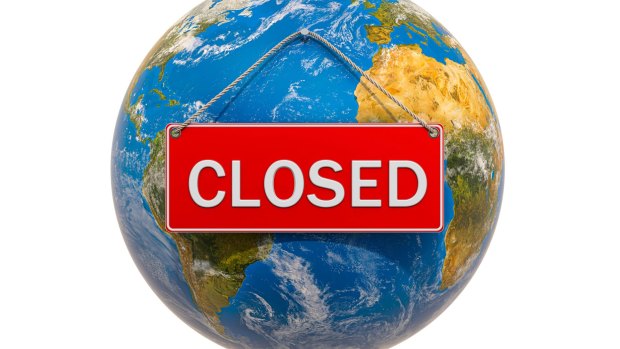This was published 3 years ago
COVID-19 travel restrictions around the world: One third of all countries now closed to tourists
By Michael Gebicki

A new UN World Tourism Organization report has found a third of all countries are now completely closed to international tourism.Credit: iStock
Aren't travellers supposed to be heaving a sigh of relief right now? COVID-19 vaccines rolling out, ads for bargain-priced overseas getaways on the rise, half-price airfares for interstate regional travel, domestic cruising set to resume in mid-year – surely there's light at the end of the tunnel?
Countries are priming the pump with marketing campaigns urging tourists to visit. In Australia and New Zealand we've pretty much fought the pandemic to a standstill, along with the rest of the Asia Pacific. Taiwan has recorded just 10 deaths from COVID-19, Vietnam 35, Singapore 30. Shouldn't we be popping corks and seeing some relaxation in the travel restrictions that stop us from travelling overseas?
But that's not what's happening, at least not in our region.
"One in three destinations worldwide are now completely closed to international tourism."
So begins a comprehensive overview of travel restrictions recently published by the UN World Tourism Organization. Another one in three destinations are partially closed while just five including Tanzania and Nicaragua have lifted all COVID-19 travel restrictions.
This is the ninth UNWTO review of travel restrictions, and one of its conclusions is a slight reversal of the trends in earlier reviews that showed an easing of travel restrictions. Instead, countries are tightening borders as a result of new and more infectious variants of the COVID-19 virus, with total closures to visitors most prevalent in the Asia Pacific region and Europe.
While that might sound like the death knell for many tourism-dependent businesses, it could just be a small blip in a positive trend. While one-third of all destinations with closed borders might sound a lot, in April 2020 the figure was over 70 per cent.
The trend now is toward partial border closures, with testing and quarantine becoming the norm for visitors. Many countries are adopting a more nuanced, risk-based analysis that allows entry to foreign tourists. According to the UNWTO report, almost a third of all countries now require visitors to show proof of a negative Polymerase Chain Reaction (PCR) test or antigen test taken shortly before arrival. Some also require a follow-up test on arrival and contact tracing during their visit, in the form of a smartphone app.
For example Australian residents can apply for an Air Travel Pass to visit Singapore, which requires a PCR test on arrival, quarantine isolation in a declared place of accommodation until the test result is confirmed negative and downloading and activating Singapore's TraceTogether app for the duration of their stay.
In another hopeful sign, the EU is considering a digital green certificate, available to all EU citizens who have been vaccinated, tested negative or recently recovered from COVID-19, to allow them to travel freely within the EU's 27 member states.
Iceland, one of the countries that has weathered the pandemic with relatively few cases, will open its borders to all vaccinated foreigners from March 18, 2021. Iceland had already opened to vaccinated travellers from the EU but under the extended rules vaccinated visitors from the US and UK, Iceland's two main source of visitors, will also be allowed to enter.
The region slowest to open its doors to foreign visitors is our own Asia Pacific. Some two-thirds of all destinations in the region have completely closed their borders to tourists. That's a higher proportion than any other region in the UNWTO review, and those Asia Pacific countries are not opening up as other regions are, despite relatively low numbers of infections compared with the rest of the world.
While Europe, Africa, the Middle East and the Americas are transitioning toward greater freedom of movement, our region is treading water. In the meantime, Australia's tourism industry is being propped up by expensive government subsidies – but only in some select regional areas – and an industry that employs 660,000 Australians and which brings in several million visitors who contributed close to $50 billion to the Australian economy in 2018-19 withers on the vine, with no roadmap to recovery.
See also: Our governments ruined tourism and now they want you to fix it
Sign up for the Traveller newsletter
The latest travel news, tips and inspiration delivered to your inbox. Sign up now.